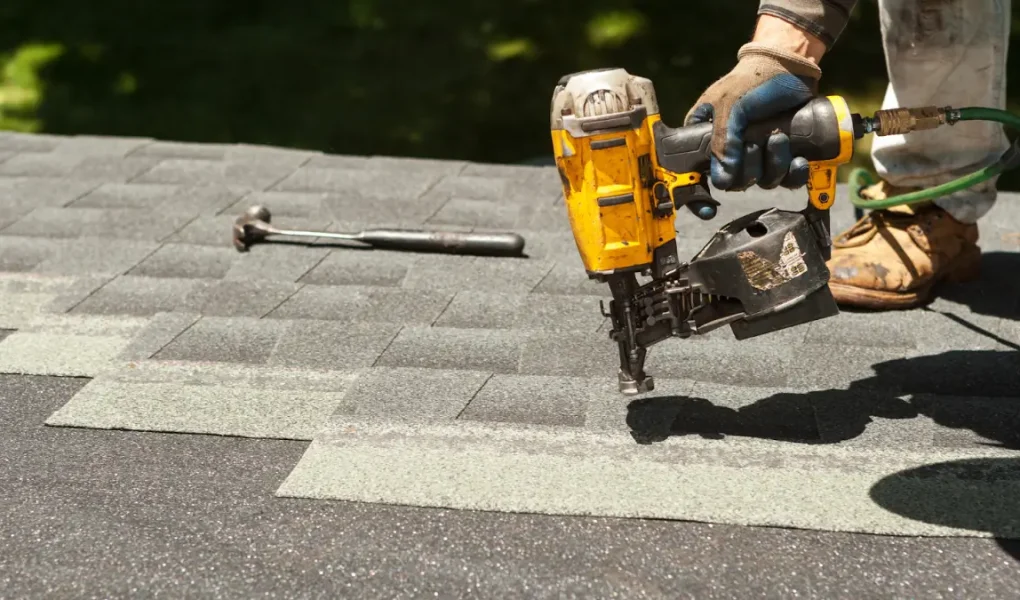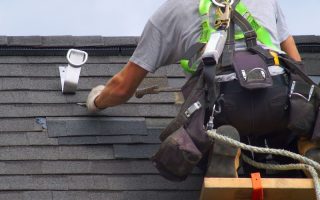Are you considering a new roof for your home? A recent study found that approximately 5 million roofs are replaced annually in the United States.
Whether you’re dealing with storm damage or your roof has simply reached the end of its lifespan, understanding the roof installation and replacement process is essential for any homeowner.
Let’s walk through everything you need to know about getting a new roof, from planning to completion.
Planning Your Roof Project: Essential First Steps
Before any shingles are laid, proper planning sets the foundation for a successful roof replacement. Taking time to evaluate your needs and set realistic expectations will save you headaches down the road.
Recognizing Signs You Need a New Roof
Your roof might be quietly asking for help through various signals. Missing or curling shingles, granules in your gutters, or water stains on your ceiling are all red flags. Most asphalt shingle roofs last 20-25 years, so age is another important factor to consider.
Timing Your Project Strategically
Vancouver, Washington experiences a mix of rainy winters and mild summers, making weather patterns an important consideration for local homeowners planning roofing projects.
When selecting roofing contractors in Vancouver WA, look for companies with experience handling the region’s specific climate conditions. The ideal time for roof installation in this area is typically during the summer months when precipitation is at its lowest, allowing materials to seal properly.
Budgeting For Your Roofing Investment
A new roof is a significant investment. Set aside 10-15% beyond your initial estimate for unexpected issues that might arise during the tear-off process. Remember that while price matters, quality should never be sacrificed for cost alone.
The right financial planning makes all the difference between stress and satisfaction with your roofing project.
Selecting the Right Roofing Professional
Finding a qualified contractor is perhaps the most critical decision you’ll make during your roofing journey. The right professional turns a potentially stressful project into a smooth experience.
Key Qualifications to Look For
When vetting potential contractors, ensure they have proper licensing, insurance (both liability and workers’ compensation), and manufacturer certifications. These indicate a commitment to quality and protect you from liability during the project.
Questions to Ask Before Hiring
Don’t hesitate to interview contractors thoroughly. Ask about crew experience, project timelines, and how they handle unexpected issues. A good contractor welcomes these questions and provides clear, confident answers.
Understanding Estimates and Warranties
Get at least three written estimates that break down costs for materials, labor, and potential extra charges. Pay special attention to warranty offerings – both manufacturer warranties on materials and workmanship guarantees from the contractor.
Your choice of contractor will determine both the process and the result of your roof replacement, so take your time with this important decision.
Exploring Roofing Materials: Making the Best Choice
Today’s market offers numerous roofing material options, each with unique benefits and considerations. Your climate, home architecture, and budget will all influence the ideal choice.
Traditional Roofing Options
Asphalt Shingles: The Popular Choice
Asphalt shingles remain the most common roofing material in America due to their affordability and versatility. They come in various colors and styles, with architectural or dimensional shingles offering enhanced aesthetic appeal over standard 3-tab options.
Metal Roofing: Durability and Efficiency
Metal roofs have surged in popularity thanks to their exceptional longevity (40+ years) and energy efficiency. Though initially more expensive than asphalt, they often prove more economical over time due to minimal maintenance requirements.
Wood and Slate: Premium Natural Options
For distinctive homes, natural materials like wood shakes or slate tiles provide unmatched character. These premium options require special installation techniques and typically come with higher price tags.
Innovative Roofing Solutions
Solar-Integrated Roofing
Modern roof installation can now include integrated solar panels that generate electricity while protecting your home. This eco-friendly option continues to become more affordable as technology advances.
Cool Roof Technology
Specially designed to reflect more sunlight and absorb less heat, cool roofing helps reduce energy costs and urban heat island effects. This technology can be applied to various roofing materials.
The material you select affects not only aesthetics but also durability, maintenance needs, and energy efficiency for decades to come.
The Installation Process: Building Your New Roof
When installation day arrives, understanding each phase helps you monitor progress and ensure quality workmanship throughout the roof installation process.
Tear-Off: Out With The Old
Efficient Removal Techniques
-
The crew starts removing old shingles from the peak and works downward.
-
Specialized tools are used to minimize damage to the underlying structure.
Evaluating the Decking
-
Once shingles are removed, the decking (plywood or OSB) is thoroughly inspected.
-
Any damaged or rotted areas are replaced to ensure structural integrity.
Proper Disposal Methods
-
A dedicated dumpster is brought onsite.
-
Contractors handle recycling or the responsible disposal of old roofing materials.
Foundation Elements: Creating a Solid Base
Water Barriers and Underlayment
-
A synthetic or felt underlayment is installed before shingles.
-
Provides a moisture-resistant layer as a secondary line of defense.
Proper Flashing Installation
-
Flashing is installed around chimneys, vents, skylights, and roof valleys.
-
Typically made of aluminum or galvanized steel.
-
Prevents water seepage into vulnerable roof joints.
Post-Installation: Maximizing Your Roof Investment
After the roof installation is complete, proper maintenance ensures you get the most value from your investment. Establishing a regular inspection schedule is one of the most effective ways to prolong your roof’s lifespan. Plan to inspect your roof at least twice a year, ideally in spring and fall.
Checking for loose or damaged shingles, deteriorated flashing, and buildup in gutters or downspouts. In addition to these seasonal checkups, it’s wise to hire a professional for a more thorough evaluation every three to five years, as they can identify potential issues that may not be obvious to the untrained eye.
Keeping your roof clean is another essential maintenance practice; regularly removing debris, especially from valleys and gutters, helps prevent moisture buildup that can speed up material deterioration. It’s also important to address small issues promptly.
A minor leak or a single damaged shingle might not seem urgent, but left unresolved, it can lead to costly repairs later. Ultimately, consistent care after installation can be the difference between a roof that barely reaches its warranty period and one that performs reliably for decades.
FAQs
What Does a Complete Roof Installation Involve?
A complete roof installation includes removing old materials, inspecting and repairing the deck, installing water barriers, applying new roofing materials, and adding proper ventilation and flashing. Quality installations also include thorough cleanup and a final inspection to ensure everything meets building codes and manufacturer specifications.
Can I Install a New Roof Over Existing Shingles?
While it’s technically possible to install a second layer of shingles, this approach has significant drawbacks. Adding weight to your roof structure, hiding potential underlying problems, and typically voiding manufacturer warranties make this a risky choice. Complete tear-off allows for proper inspection and usually results in a better long-term roof installation.
How Long Should a Professional Roof Installation Take?
Most residential roof replacement projects take 1-3 days, depending on your home’s size, roof complexity, and weather conditions. Simple, smaller roofs might be completed in a single day, while larger or more complex designs could take up to a week. Your contractor should provide a realistic timeline based on your specific situation.
Final Thoughts
A successful roof installation or roof replacement requires careful planning, quality materials, and professional installation. By understanding each step of the process, you’ll make informed decisions that protect your home and investment for decades. Remember that your roof is much more than just shingles, it’s a complete system designed to shield everything you value.




